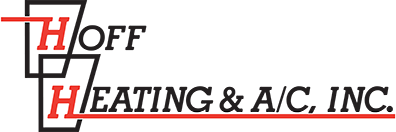What’s the Difference Between an Air Purifier and an Air Scrubber?

There are many ways to clean the air in your O’Fallon, MO home. While HVAC air filters remove common allergens and contaminants, there’s a lot that passes right through them. Upgrading this component could provide limited improvements, but adding an integrated HVAC accessory is far more effective. Whole-house air purifiers and air scrubbers eliminate mold, viruses, bacteria, and harmful volatile organic compounds (VOCs) among other things. Having either of these options installed is a great way to boost your indoor air quality (IAQ) and protect the health of your household. The following is everything you need to know about these increasingly popular IAQ technologies, including how they differ.
What Is an Air Scrubber?
Air scrubbers are frequently used in the clean rooms of research facilities. They’re also found in hospitals and industrial environments. Air scrubbers create clean spaces from floor to ceiling by filtering the indoor air and weighing airborne contaminants down. Installed in HVAC ductwork, they offer multi-stage air filtration to eliminate the allergens, pathogens, and contaminants that have slipped right through standard air filters.
As with all HVAC and IAQ equipment, not all air scrubbers are the same. Some models include high-efficiency particulate air (HEPA) filters that eliminate contaminants as small as 0.3 microns and with 99.7% effectiveness. Not only does this include dirt, dust, dander, dust mites, and common household chemicals, but it also includes the germs responsible for illness. With an air scrubber installed, it’s often possible to minimize or slow the transmission of communicable illnesses from room to room and person to person.
What makes air scrubbers unique is the negative ions they release. These ions attach themselves to contaminants throughout buildings and weigh them down. This causes them to settle and remain on surfaces like flooring, counters, and furnishings until they’re cleaned off. With an air scrubber, you won’t have to worry about indoor movement disturbing settled particulates in-between vacuuming, sweeping, mopping, dusting, or disinfecting. Some air scrubbers even release sanitizing solutions that render germs inactive and neutralize gaseous chemicals.
What Is an Air Purifier?
Air purifiers have the same filtration capabilities as air scrubbers. Many of these appliances offer HEPA filtration and the removal of particulates as small as 0.3 microns with 99.7% effectiveness. Installed on or in HVAC ducting, air purifiers filter all of the air that comes through ductwork during heating and cooling system operation. The filters in air purifiers have a greater surface area than standard HVAC air filters and significantly tighter mesh.
The biggest difference between air scrubbers and air purifiers lies in what they clean. While both purify the indoor air, only air scrubbers address contaminants on indoor surfaces and in air that isn’t pulled into the HVAC system. This is why air scrubbers are frequently used in medical and research facilities and why they’re standard fixtures in “clean rooms”. They take a much more comprehensive approach to eliminating pathogens and contaminants throughout the entire space.
How to Know Which Is Better for Your Home
Both air purifiers and air scrubbers remove smoke odors, and both remove many of the chemical components of secondhand smoke as well. If someone is actively smoking in your home, an air purifier will clean smoky air as it passes through your ducting. Comparatively, an air scrubber will remove smoke from the air in your ductwork, but it will also ionize the smoke-related contaminants on your walls, flooring, and furnishings.
Although air scrubbing sounds quite a bit more effective than air purification, this level of contaminant removal might not be necessary for your home. Moreover, each of these systems comes with a unique range of benefits and drawbacks.
The Benefits and Drawbacks of Air Scrubbers
Air scrubbers are more effective than air purifiers in eliminating gaseous contaminants. These units can neutralize radon, carbon monoxide (CO), and VOCs. They’re perfect for homes with newly installed, off-gassing building materials, such as:
- Flooring adhesives
- Unsealed particle board
- Interior paint
- Furnishings
New carpets, sofas, chairs, tables, and mattresses constantly off-gas a range of harmful contaminants. These same chemicals are what give these purchases their distinctive, “fresh out of the factory” smell. As such, if you just purchased new construction or have recently renovated or refurbished your home, installing an air purifier might be a good idea.
Where air scrubbers may fall short is in odor control. Entry-level and mid-level systems are rarely as effective as air purifiers in eliminating smoke odors, cooking odors, and the musty smells associated with mold and mildew.
Air scrubbers are a standout choice for homes that frequently share communicable illnesses. By weighing down and neutralizing germs, they minimize the risk of having one sick person make everyone else in the household unwell. However, according to the U.S. Environmental Protection Agency (EPA), air scrubbers aren’t effective, standalone solutions for preventing the transmission of all illnesses.
There’s also the question of whether or not creating a nearly sterile environment is ideal for building residents. Some bacteria remain a natural and necessary part of the indoor environment. Air scrubbers neutralize both good and bad bacteria indiscriminately, and the negative ions and cleaning solutions they release come in contact with everything and everyone. However, if you have someone living in your home who’s immuno-compromised or living with a terminal illness, an air scrubber will create indoor conditions similar to those of a hospital or other ultra-clean facility.
The Benefits and Drawbacks of Whole-House Air Purification
Whole-house air purifiers outperform portable air purifiers by a large margin. They can also eliminate a much broader range of airborne contaminants than standard HVAC air filters can, including:
- Mold
- Pet dander
- Viruses and bacteria
- Dust mites
However, gaseous pollutants like VOCs, radon, and carbon monoxide (CO) can’t be removed by air purifiers with standard, HEPA-based filter media. To eliminate these contaminants, you’ll need an air purifier with an activated carbon filter.
The Importance of Scheduling an Indoor Air Quality Assessment
Deciding between air purifiers and air scrubbers is a job for indoor air quality assessments. IAQ assessments identify the exact allergens and contaminants within homes, measure their concentrations, and determine humidity levels. These evaluations allow our technicians to make effective, needs-specific recommendations for IAQ equipment. They also point out fixable problems that are undermining the air quality.
Finding and Addressing the Underlying Causes of Your IAQ Concerns
Indoor air quality assessments can bring many ongoing health hazards to light. For instance, these assessments test for higher-than-normal levels of radon. Breathing radon in introduces harmful, radioactive particles into the lungs and increases the risk of lung cancer and other respiratory ailments. Radon can enter your home via a leaky slab or through your sump pump pit if your sump pump isn’t properly installed or capped.
In like fashion, an IAQ assessment can clue you into problems with your fuel-combusting furnace or water heater and its attached venting system. It can additionally point out slow and hidden plumbing leaks that cause widespread and difficult-to-treat mold issues. While installing air scrubbers or air purifiers works well for cleaning the air in most environments, these measures won’t work at all if you have a constant and unchecked source of contamination.
Residents of O’Fallon, MO can count on us for superior heating and cooling services. When IAQ problems arise, we can help with cutting-edge indoor air quality improvements. We offer air purifiers, air scrubbers, whole-house humidification and dehumidification equipment, and germicidal lights. To schedule an IAQ assessment, get in touch with Hoff Heating & AC now.

